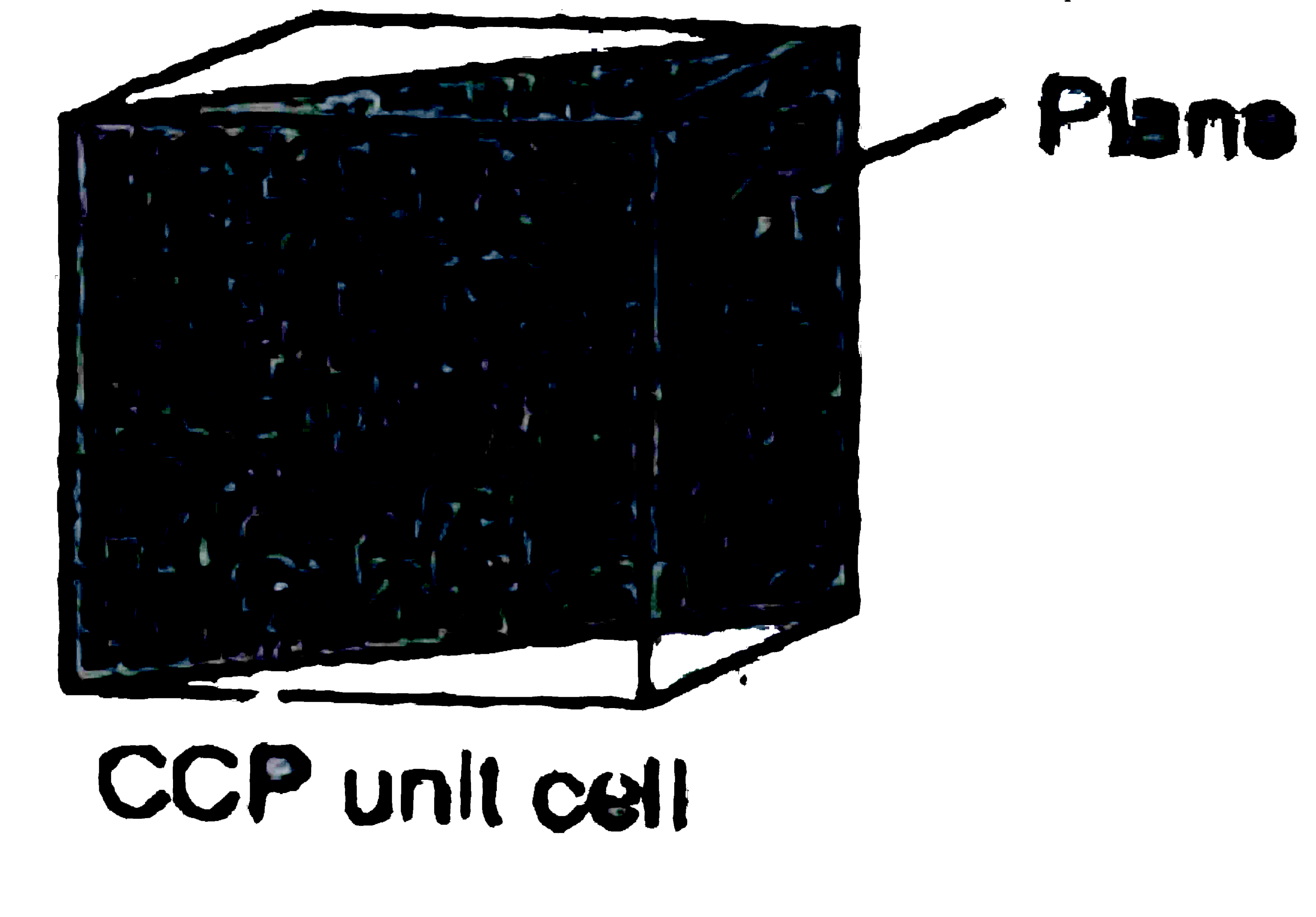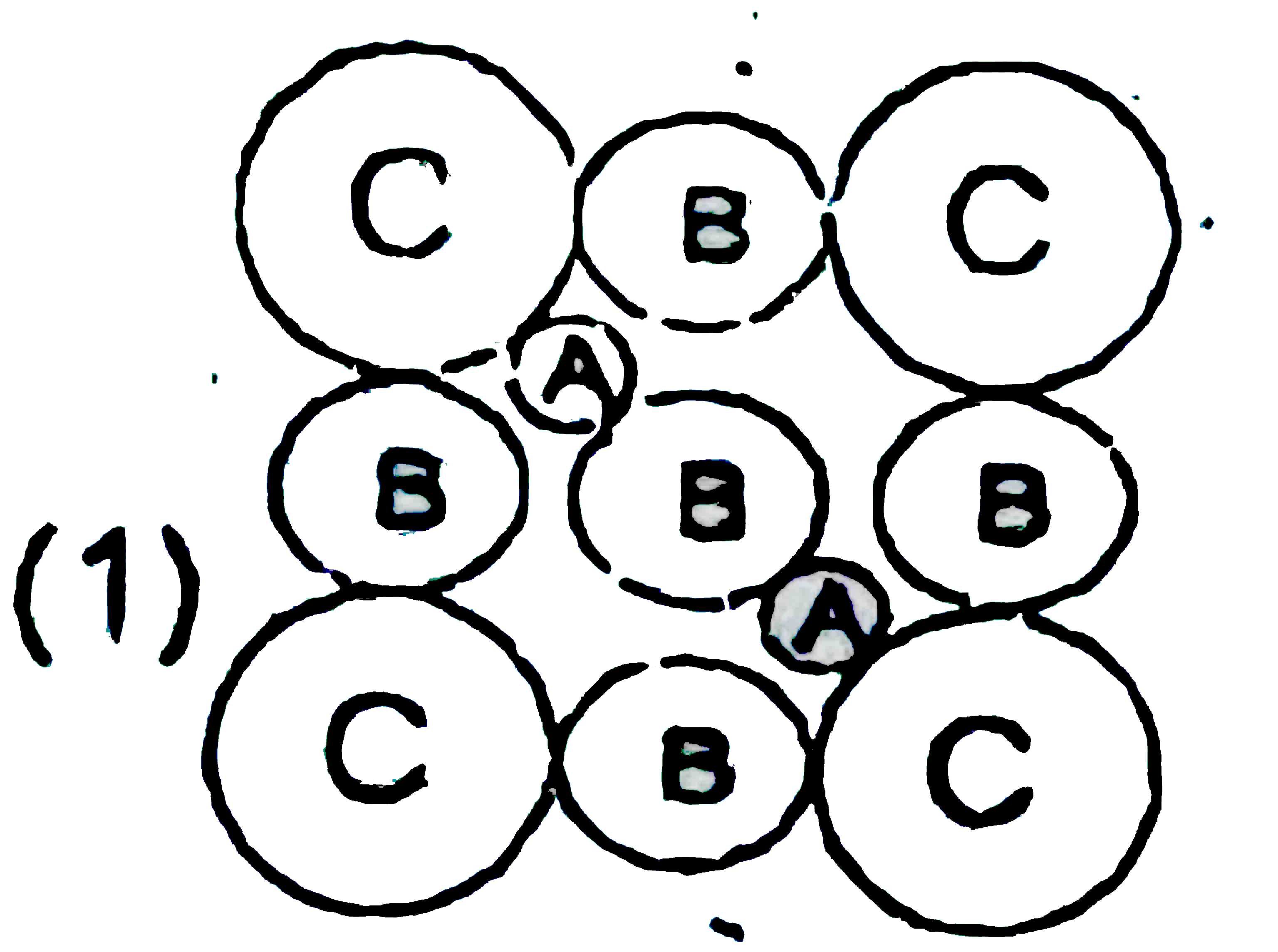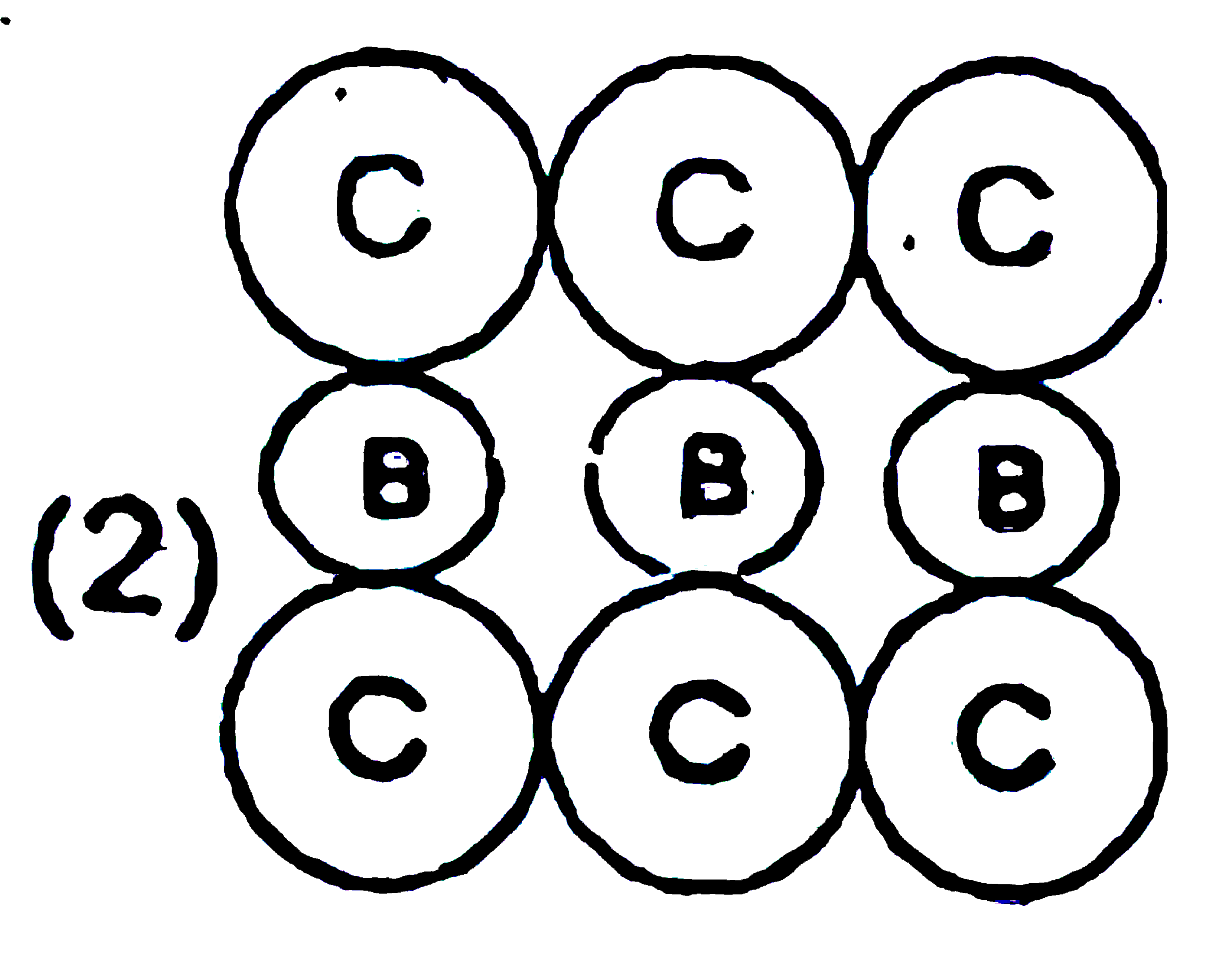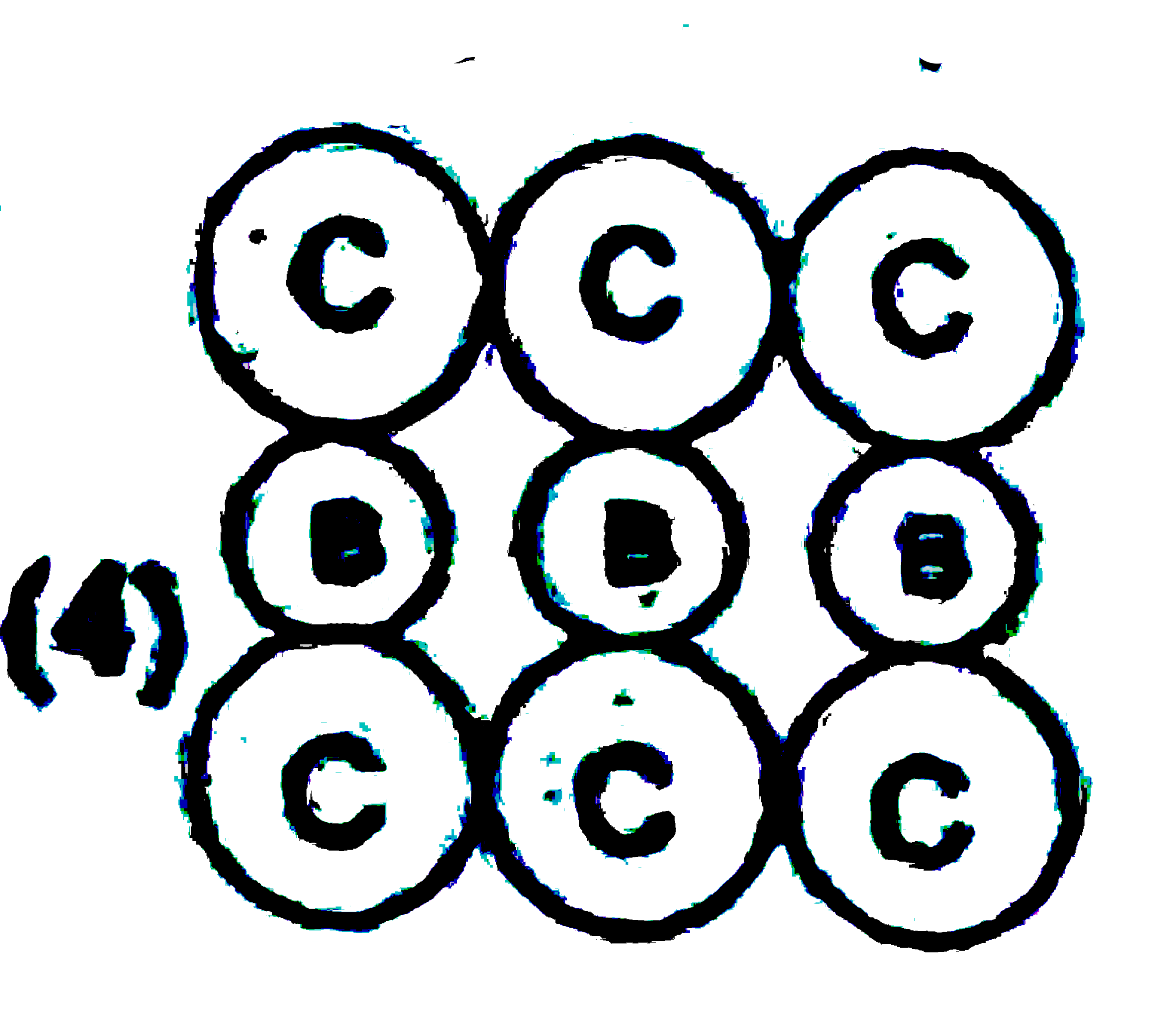Select the corrent statement (s)
(a) The C.N. of cation occupying a tetrahedral hole is 4
(b) The C.N. of cation occupying an octabedral hole is 6
(c ) In schottky defects, density of the lattice decreases
a,b
b,c
a,b,c
a,c
The correct Answer is:C
Since terthadral holes are surrounded by a nearest neighours so, the C.N of cation occupying tetrahedral hole is 4 since octahedral holes is surrounded by six nearest neighource so, C.N of cation accopying outahedral is 6 In schotily defecty defects a parts of anion and cation so density of lattice decreases
Topper's Solved these Questions
- BOOK - A2ZCHAPTER - SOLID STATEEXERCISE - Defects In Solids And Semiconductors21videos
SOLID STATE
- BOOK - A2ZCHAPTER - SOLID STATEEXERCISE - Magnetism And Bragg'S Equation13videos
SOLID STATE
- BOOK - A2ZCHAPTER - SOLID STATEEXERCISE - Ccp, Hcp, Octahedral And Tetral Voids17videos
SOLID STATE
- BOOK - A2ZCHAPTER - P BLOCK ELEMENTS ( GROUP 15,16,17,18)EXERCISE - Section D - Chapter End Test30videos
P BLOCK ELEMENTS ( GROUP 15,16,17,18)
- BOOK - A2ZCHAPTER - SOLUTIONSEXERCISE - Section D - Chapter End Test30videos
SOLUTIONS
Similar Questions
Select the correct statement (s)
- (a) The C.N. of cation occupying a tetrahedral hole is 4.
(b) The C.N. of cation occupying a octahedral hole is 6.
(c) In schottky defects, density of the lattice decreases.
(A) a, b (B) b, c
(C) a, b, c (D) a, cView SolutionTitanium crystallizes in a face centred cubic lattice. It reacts with C or H interstitially, by allowing atoms of these elements to occupy holes in the host lattice. Hydrogen occupies tetrahedral holes, but carbon occupies octahedral holes.
(a) Predict the formula of titanium hydride and titanium carbide formed by saturating the titanium lattice with ''foreign'' element.
(b) What is the maximum ratio of ''foreign'' atom radius to host atom radius that can be tolerated in a tetrahedral hole without causing a strain in the host lattice ?View Solution
Knowledge Check
- Question 1 - Select One
In sphalerite structure C.N. of cation and anion are respectively
A6, 6B8, 4C4, 4D8, 8 - Question 2 - Select One
In a hypothetical solid C atoms form C C P lattice with A atoms occupying all the Tetrahedral Voids and B atoms occupying all the octahedral voids A and B atoms are of the appropriate size such that there is no distortions in the CCP lattice. Now if a plane is cut ( as shown ) then the section would like
 A
A B
B C
C D
D
- Question 3 - Select One
In a structure, A atoms have fcc arrangement B atoms occupy all the tetrahedral sites and C atoms occupy half the octahedral sites. The formula of the compound is
AA2B2C2BA2B4CCAB2CDA4B2C
Assertion: In a crystal, the size of the cation is larger in a tetrahedral hole than in an octahedral hole.
Reason: Cations occupy more space than atoms in crystal packingView SolutionAssertion In crystal lattice, size of the cation is larger in a tetrahedral hole than in a octahedral hole than in a octahedral hole.
Reason(R)The cations occupy more space than atoms in crystal packing.View SolutionAssertion: In a crystal, the size of the cation is larger in a tetrahedral hole than in an octahedral hole.
Reason: Cations occupy more space than atoms in crystal packingView SolutionAssertion: In a crystal, the size of the cation is larger in a tetrahedral hole than in an octahedral hole.
Reason: Cations occupy more space than atoms in crystal packingView SolutionDefects which do not disturb the stoichiometry are called stochiometric defect. At the time of crystal formation an ion may not occupy its expected position leaving a void or hole at that site. As a metter of fact one positive and one negative ion are missing from their respective positions leaving behind a pair of holes. This vacancy is a Schottky defect. Due to this defect density decreases. Defect arises in which certain atoms or ions have migrated to interstitial position some distance removed from the holes which they vacated. In this case there is no change in the density of the crystal.
In the Schottky defectView Solution

